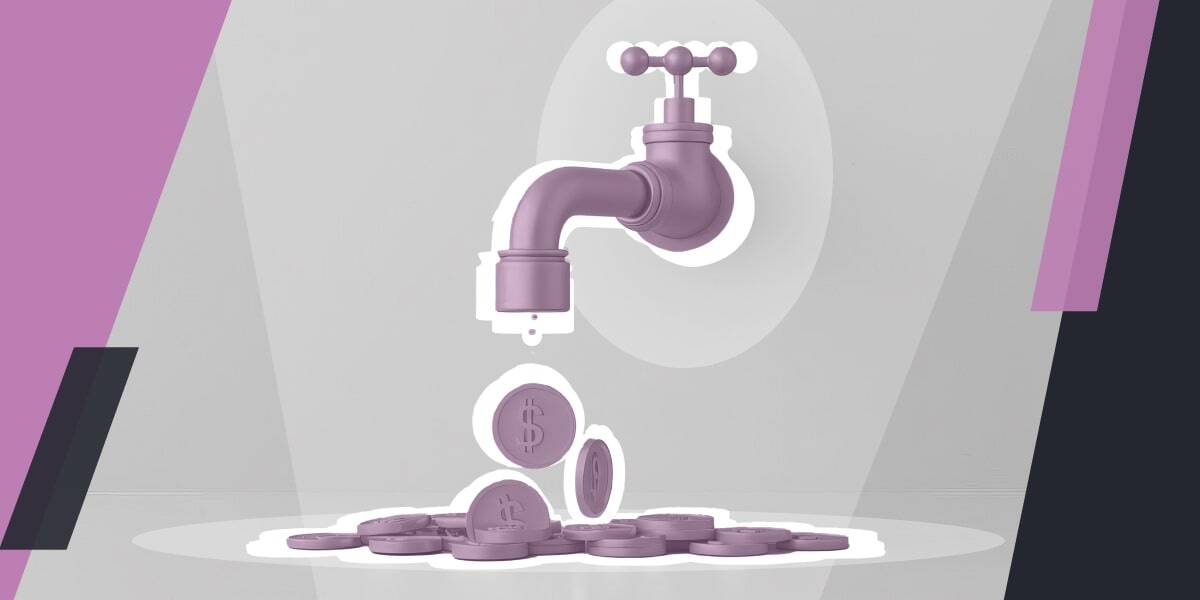
Given the tremendous upheavals many businesses have seen over the past couple of years due to the pandemic, Brexit and other disruptive factors, is it time to revisit our strategic thinking about buyer behaviour?
Historically, assumptions and insights get drawn from research that is likely to be several years old.
But today, driven by the need to understand how radically things have changed, and how they've changed, several new pieces of research have emerged. Research shows us what B2B buyers in 2021 want, how they are behaving now, what they are looking for and how they make decisions.
The first imperative: They are looking for self-service
This new research shows that the pandemic accelerated a trend for self-service that was already a significant factor beforehand. Buyers want to research and digest information independently with no vendor input and only contact them when they are ready.
Right now, according to one survey, 81% of buyers say that they engage with B2B vendors only when they are ready to buy. [3]
It is also clear that aggressive sales tactics do more harm than good, with only 9% likely to engage in a cold sales call. [3]
And in another survey, 34% of buyers said that cold calling or repeatedly emailing was an instant deal killer. [5]
Unfortunately, it seems that B2B vendors are not entirely on board with this trend as a significant 64% of buyers are saying that B2B vendors are not approaching them at the right time. [3]
Key takeaways:
- Understand that buyers need time to research solutions and come to their conclusions – you cannot force a sale on them.
- Make it easy for them to find the relevant information at the right time and become a trusted advisor by publishing helpful and authoritative content.
- Understand as much as you can of your buyers' journey and anticipate the right time to contact them.
The second imperative: Beware complexity and caution
The second critical insight from the research I've seen is that the buying process is becoming more complex. There are more stakeholders involved in a purchasing decision, and buyer groups are more cautious than before.
Whilst some of these factors may be temporary, for now, we have to accept that B2B has become more involved, more time consuming and potentially, more complex.
Many buyers are spending more time than ever before researching solutions. They are more likely to pick solutions they know are tried and tested over new approaches or radical new products. (33% of buyers spend more time researching products now than before the pandemic [6]
56% of buyers consume more types of sales and marketing material than they did pre-2020 [3], and 61% of buyers are sticking with solutions they know rather than new or more innovative products. [7])
More people are involved in a buying decision, not just more people, but more departments too, with IT, Finance, HR, Business Development, Operations and Administration, potentially influencing the buying process.
Today, 60% of purchases have four or more people involved (compared with just 47% in 2017). [8]
Increasing complexity and more interactions are required to make buying decisions which have increased dramatically in the past two years: from 17 in 2019 to 27 in 2021. [8]
One of the more striking revelations from this new batch of research is that B2B vendors could be targeting the wrong people. Senior decision-makers are the primary target for B2B marketers, with most of their time and effort spent reaching them.
However, B2B buyers are clear that middle managers play a significant role in guiding purchase decisions. Over half of buyers say that managers have considerable influence over the outcome of the buying process. [9]
In researching solutions, buyers are using more channels than ever before and consuming more content, too – in 2021, the average buyer is using around seven information sources to make a purchase decision, a 35% increase from 2020. [6]
Key Takeaways
- You must reach everyone involved in the buying process with your marketing, not just the key decision-maker.
- Be aware that radical new solutions are less likely to strike a chord with buyers in the current climate; tried and trusted messages are more likely to resonate.
- Try to have a presence in every channel that your potential customers are using; you need to be found where they are looking and when.
The third imperative: The vital role of customer services
For buyers, there seems to be no more important factor in a buying decision than customer service. And not just the buying decision, it's crucial at every stage – researching, buying, and using a product or service.
On average, buyers surveyed are 34% more likely to buy and 32% more likely to renew a contract with B2B leading suppliers that master customer experience. [2]
Unfortunately, this is an area where there is a significant gap between buyers and sellers. 60% of sellers say they always put the buyer first, but only 24% of buyers agree [5].
There is work to do here. Either you are delivering on a stated goal of putting the buyer first (rather than just words). Or on marketing the fact that you are doing just that.
There is good news, however, when looking at the health of business relationships after a sale, with 84% of buyers saying their relationship with vendors is Good (56%) or Very Good (28%) [4]
That relationship will strengthen or weaken depending on a range of factors, most directly related to customer service, as the following buyer responses to research questions show. [4]
Reasons buyers give for vendor relationships getting stronger:
- Trust 52%
- Personal Relationships 45%
- Responsiveness 45%
- Quality Improvements 43%
- Value for money 38%
Reasons buyers give for vendor relationships getting weaker
- Lack of responsiveness 31%
- Financial Terms 30%
- Speed of delivery 28%
- Value for money 23%
- Innovation 20%
Not surprisingly, effective communications post-sale are crucial to the process of nurturing and growing the vendor-buyer relationship, with the use of social media being a key tactic.
According to LinkedIn, The overall number of buyers who said their relationship with vendors grew more robust over time totalled 48 per cent. If those buyers used social, that figure increased to 55 per cent. If those buyers did not use social, that figure tumbled to 34 per cent. [4]
Key takeaways
- Assess, improve, and focus on customer experiences and service – it is the key to acquiring and keeping customers.
- Don't just say you are putting the buyer first – actually put the buyer first. Make sure that is one of the consistent themes of your marketing.
- Make sure you have a post-sale marketing plan that effectively uses all appropriate communication channels – particularly social – to ensure that your vendor-buyer relationship grows stronger.
The fourth imperative: Content is still paramount
Given the trend for self-service we highlighted at the beginning of this article and the harm that unwanted cold contact could cause, content marketing has still been the essential B2B marketing tactic in 2021.
It is not just an essential marketing strategy that benefits the vendor though, buyers welcome content too, with 69% finding it helpful to receive relevant information from a vendor throughout their buyer's journey [3]
Despite the increase in content published over the past few years, there is still a long way to go to meet buyers' needs when researching solutions, with only 21% of buyers believing they get that relevant information [3].
What are buyers looking for when it comes to content: [3]
- Educates me on how to overcome my challenges and solve pains, 69%
- Resources tailored to the current stage of my buying journey, 53%
- It helps me to make informed purchase decisions, 50%
- Information about features and functionality, 30%
- Creative and hyper-personalised content, 26%
In your content and your interactions, you need to demonstrate to the buyer that you understand them and can help them. This will help to overcome any resistance they have to engage with you.
Research shows that the four most important factors for buyers' willingness to engage with a vendor are: [4]
- Understands my company's business model
- Is a subject matter expert/thought leader
- Provides valuable consultation, education, or tools
- Knows my company's products/services
Given the research, we now know what content buyers want and what that content should communicate, but where should you be publishing? Buyers use several content channels at different stages of their buyer's journey. And multiple content channels are used concurrently as buyers access a range of information from various sources.
The proportion of this channel use varies, though, depending on the stage the buyer is at, as shown by the research below: [4]
Awareness – Social 67% / Info sharing across organisation 67% / Online search 65%
Scope – Info sharing across organisation 56% / Online search 54% / Social 48%
Plan – Info sharing across organisation 56% / Online search 47% / Social 42%
Select – Info sharing across organisation 50% / Online search 44% / Social 41%
Implement – Info sharing across organisation 56% / Vendor Website or content 33% / Social 32%
Information sharing within an organisation is a significant element in the buying process, which is one reason why targeting your content at all stakeholders – not just the principle buyer – is crucial to your marketing strategy. 85% of B2B buyers said they share relevant content with others in the decision-making group. [3]
Key takeaways
- Understand what content your buyers need and when
- Use the research to create the type of content buyers want: education, resources, information, and personalised content.
- Target all stakeholders and all departments involved in the buying process, not just the primary buyer
- Make sure that content is easy to find in the channels buyers use, online search, social channels and your website.
The penultimate imperative: The right kind of personalisation
Personalisation has been a big buzzword for a few years now, but what does it mean in practice? How does this fit with the idea of privacy? And the increasing pressures to record the barest possible amount of information?
Studies have shown that job-related personalisation is the key and that over-familiarity on a personal level can lose a buyer's business.
When asked, "What does good personalisation look like?" this is how buyers responded: [3]
- Identifying and understanding the pains/challenges related to my job, 71.5%
- Understanding my job role/function, 66%
- Understanding the industry/sector I work in, 60%
- Identifying recent changes or events related to my company, 23%
- Personalising digital marketing assets, 23%
- Personalising physical marketing assets, 7%
- Identifying interests/hobbies about my personal life, 4%
Key takeaways
- Create content that relates directly to the buyer's professional needs – their job role and the issues they face
- Avoid creepy personalisation that targets their personal lives, interests, and hobbies
The final imperative: The importance of trust and honesty
One of the essential elements in a business relationship is trust, and no relationship can survive a breakdown in trust. It takes time to build and only moments to break. Trust is built on authority and integrity and preserved with honesty and fair dealings.
Trust is the number one trait that buyers look for in a salesperson (followed by transparency). And yet only 37% of buyers regard salespeople as trustworthy. [5]
Once past that initial mistrust, though, salespeople that buyers ultimately deal with are regarded as trusted advisors by 89% of buyers [5]
Understanding their needs is vital to buyers, but being honest with them is also essential to keep their trust and business.
So, whilst many actions may be needed to secure a buying decision, buyers listed the following six factors as deal-killers: [5]
- Delivering misleading information about a product, 48%
- Not understanding their product or service, 44%
- Not understanding my company and its needs, 43%
- Cold calling or emailing me repeatedly, 34%
- Not understanding their competitors' products and services, 34%
- Is affiliated with a brand I don't trust, 32%
Being a brand that the buyer recognises and associates with authority and integrity is a way to build that all-important trust. This makes what your brand stands for and your brand awareness vital for success.
87% of buyers said they are more likely to consider a B2B vendor if they have a positive impression of the brand before conducting purchasing research. [3]
This means your marketing plan has to raise brand awareness through generic content and publishing content targeted at specific buyer groups at particular points in their buyers' journey; both are important.
Key takeaways
- Be honest in all your dealings with vendors – or risk losing business (and remember, they will probably tell their peers, so it's not just their business you are likely to lose)
- Ensure that your whole business understands this need for honesty – it only takes one employee to lie to or deceive a customer (unintentionally or otherwise), and the harm is done.
- Establish authority through content that establishes your competence, strategic thinking and track record.
- Don't neglect general brand awareness content in your marketing plan and that all-important, laser-focussed content aimed at buyers.
Conclusion
Some of this research may not come as a surprise. Indeed, some of the things buyers have been looking for in 2021 are pretty much the same things they wanted ten years ago, but even there, if you look at the detail, at the information you need to plan a detailed strategy, that's where the differences are.
Overall, the landscape has changed, and there are significant lessons to be learned and plenty of food for thought. What is sure, though, is that unless you pay attention to these findings, trends and insights, your B2B marketing will lose effectiveness and may even negatively affect you. Use this research and information to question your current strategy, improve its efficacy and generate ideas from now on.
[2] Close the expectation gap with your B2B customers. Deloitte 2021
[3] B2B Buyer Insights DurhamLane 2021
[4] Rethink the B2B buyers Journey – LinkedIn
[5] State of Sales 2021 – LinkedIn
[6] TrustRadius B2B Buying Disconnect (2021)
[7] Edelman/LinkedIn – How B2B companies are adapting customer engagement strategies during COVID (2020)
[9] Bain Technology Purchasing Trends Survey Phase II



